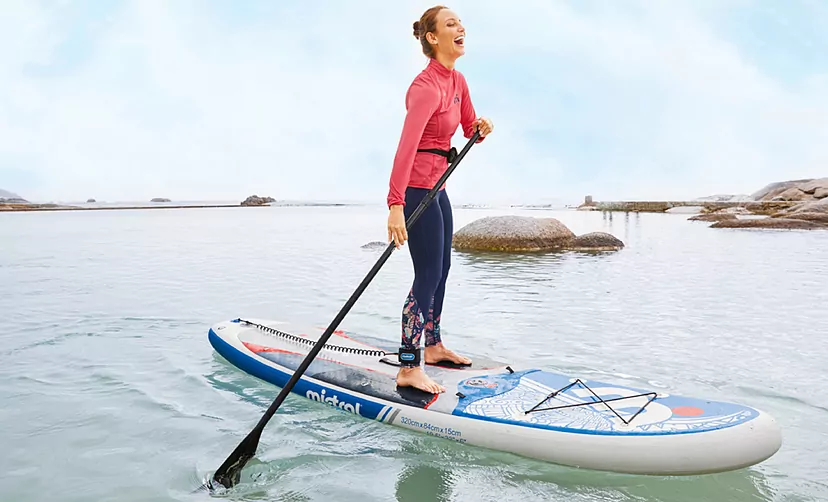
Paddle boarding is a fun and exhilarating water activity that can be enjoyed by people of all ages and skill levels. Whether you are a beginner or an experienced paddler, understanding the ideal water conditions for paddle boarding is important to ensure a safe and enjoyable experience. In this article, we will discuss the ideal water conditions for different levels of paddle boarders.
Beginner Paddle Boarders
If you are new to paddle boarding, it is essential to start in calm, flat water conditions. This will allow you to get used to balancing on the board and paddling without the added challenge of waves or currents. Calm water conditions are also less intimidating and can boost your confidence as a beginner.
Ideal water conditions for beginner paddle boarders include:
Still Water: Still water conditions are calm and free of waves or currents, making them the perfect environment for beginners. Lakes, ponds, and canals are great places to start paddle boarding.
Light Winds: Light winds can create ripples on the surface of the water, but they are not strong enough to create waves or make it difficult to paddle. A light breeze can also help cool you off on a hot day.
Warm Water: Warm water can make your paddle boarding experience more comfortable and enjoyable, especially if you are learning. Warmer water temperatures can also help you stay relaxed and calm.
Intermediate Paddle Boarders
If you have some experience with paddle boarding and are looking to challenge yourself, you may want to try paddle boarding in more challenging water conditions. However, it is important to gradually increase the difficulty level and not push yourself too hard.
Ideal water conditions for intermediate paddle boarders include:
Small Waves: Small waves can provide a fun and exciting challenge for intermediate paddle boarders. Waves that are less than three feet high are ideal, as they are not too difficult to navigate or pose a significant risk.
Moderate Winds: Moderate winds can provide a bit of a challenge for intermediate paddle boarders, but they are not too strong to make it difficult to paddle. Winds that are between 5-10 knots are ideal.
Cool Water: Cool water can be invigorating and refreshing, especially if you are paddling in warmer weather. However, it is important to wear appropriate clothing and consider wearing a wetsuit if the water temperature is below 70 degrees Fahrenheit.
Advanced Paddle Boarders
If you are an experienced paddler, you may be looking for more challenging water conditions to test your skills and push your limits. However, it is important to exercise caution and only attempt these conditions if you have the necessary skills and experience.
Ideal water conditions for advanced paddle boarders include:
Large Waves: Large waves can provide a thrilling and challenging experience for advanced paddle boarders. Waves that are over three feet high can be challenging to navigate and require advanced paddling skills.
Strong Winds: Strong winds can make it difficult to paddle and require advanced paddling skills to navigate. Winds that are over 10 knots can create whitecaps and choppy water conditions.
Cold Water: Cold water can be a significant challenge for advanced paddle boarders, as it can increase the risk of hypothermia and other cold-related injuries. If you are paddling in cold water conditions, it is essential to wear appropriate clothing and gear, including a wetsuit or drysuit.
Conclusion
Understanding the ideal water conditions for different levels of paddle boarders is important to ensure a safe and enjoyable experience. Beginner paddle boarders should start in calm, flat water conditions, while intermediate paddle boarders can challenge themselves with small waves and moderate winds. Advanced paddle boarders can test their skills with large waves, strong winds, and cold water conditions. It is important to exercise caution and only attempt challenging water conditions if you have the necessary skills and experience. By following these guidelines, you can enjoy your paddle boarding experience with confidence and safety.

